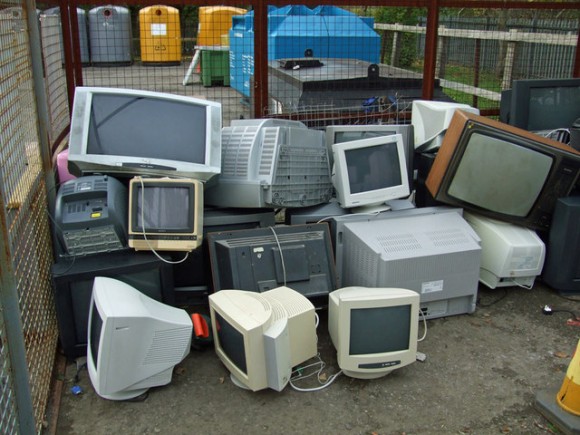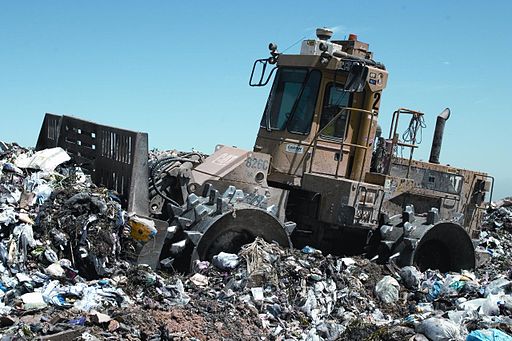aNewDomain.net — Wondering what to do with your old electronics? E-cycle them. Or do the Earth a favor and tell your friends how to recycle electronics with my tips below.
Electronic consumer products are among the most hazardous kinds of waste we produce. Take smartphones. They comprise such toxins as plastic, lead, zinc and flame retardant material. When tossed smartphones pile up in municipal landfills, the toxins their materials contain seep out — and poison the surrounding soil and water sources.
But it’s easy not to poison ourselves and the planet — just don’t toss your toys in the trash. It’s possible to take pretty much anything — phones, televisions, gaming consoles — to a reputable recycling agent. Or get creative and try to reuse or repurpose them for further use. Here’s how to recycle electronics.

E-cycling may appear to be on the rise, but sadly, less than 20 percent of e-waste is actually recycled in a responsible way. In 1970, the first inaugural Earth Day heralded the rise of recycling culture. Since then, environmental innovators have devised creative ways to recycle or repurpose paper, plastic and glass. It’s time for the world to recalibrate its efforts toward e-waste — but how do you recycle e-waste exactly?

The first step is to take action on an individual level. You can’t solve the e-waste problem all on your own, but you can certainly reduce your own e-footprint, as it were. The average U.S. household contains 24 electronic devices. Their average lifespan is two to seven years, with computers and cell phones making up the shortest consumer buying cycles. Fortunately, cell phones, computers, gaming consoles, and pretty much any other kind of electronic device can easily be upgraded, refurbished, resold or donated.
Organizations like the Resource Area for Teachers (RAFT) and Students Recycling Used Technology (StRUT) will take your refuse, upgrade it, and redistribute it to needy schools and charities. With ever tighter budgets — and with technology permeating classrooms — schools need all the help they can get.
Other recycling options include buy-back programs, which many manufacturers and retail outlets now offer. HP, for example, collects products in over 67 countries for reuse and recycling. Dell, Apple, Microsoft, and Samsung provide similar programs. You can also check out online resources like ecyclingcentral.com and earth911.com if you’re not sure where to start. Earth911 has a great tech section with all sorts of news, tips, and even DIY projects for the conscious consumer.
We are all living in a golden age of technology. It’s time we started enjoying it responsibly.
Image credits: Wikimedia Commons
Madison Andrews is a writer, editor, and designer living in Austin, Texas. She is founder and editor of madskillsvocabulary.com. Email her at madison@anewdomain.net, find her on tumblr, or follow her @madskillsvocab.












